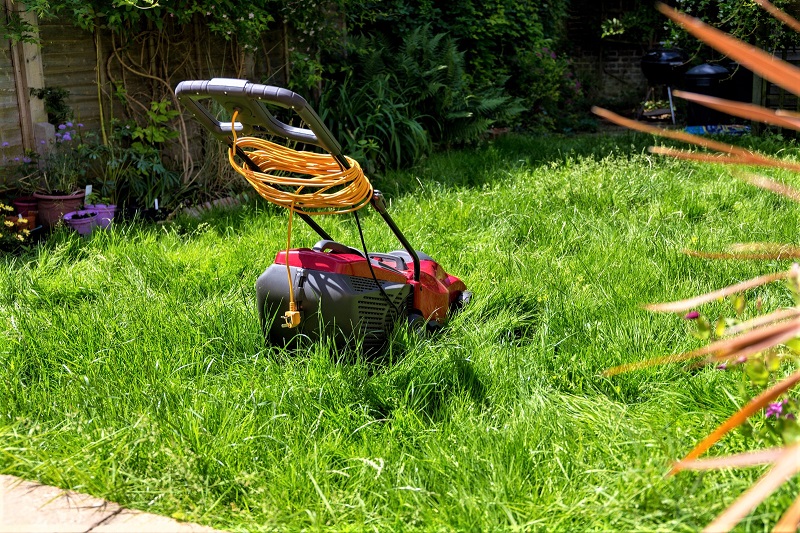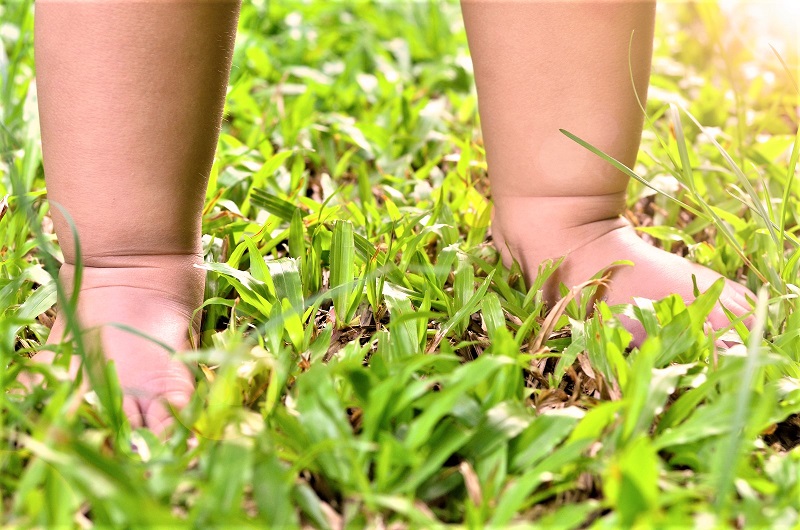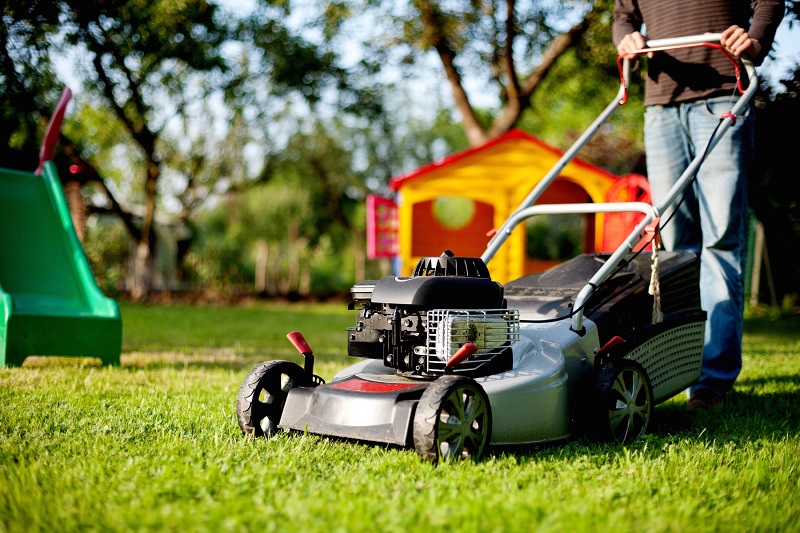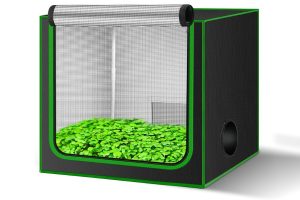Last Updated on August 21, 2024 by teamobn
Is your lawn overgrown?
You may have just returned from a long vacation – or perhaps you’ve been busy lately. Either way, an overgrown lawn is something many homeowners must confront from time to time.
Consistent lawn mowing plays a vital role in maintaining the health of your grass. If done wrong, your grassy pride and joy could turn brown and unattractive.
If that’s what you are looking at right now, don’t fret. Here are some tips to help get your overgrown lawn back to a more manageable height.
The Rule of Thumb for Mowing
Contents
The general rule of thumb is to only remove a third of the leaf blade with each mow. By setting your mowing height to this mark, you’ll avoid removing too much of the leaf blade at once.
When you remove too much of the leaf blade at one time, your lawn is scalped. You will then be cutting into the stem of the grass. This can ruin the health of your grass, resulting in a patchy-looking lawn.
You may also need to raise the mower height a little more. This will ensure you’re not cutting too low. To get the correct mowing height, mow over a small area of your overgrown lawn first using a high setting. This way, you avoid accidentally scalping your turf. You can bring the level down from there if required.
After you’ve mowed a third off the top, experts recommend waiting three days before giving it another mow.
Follow the same process during the third mowing. That is, adjust your mowing height and wait another 3 days before mowing again.
From there, correct mowing becomes a simple process of repeating this procedure until you get the height you desire.
Mowing your overgrown lawn back down to its original height outright may be tempting, but it’s best to be patient. Slowly bring the height of the mower down to ensure your grass remains healthy.
While this process takes time, it’s less stressful on the grass. That’s the best way to ensure you don’t ruin your lawn altogether.
How to Mow an Overgrown Lawn
1. If you haven’t mown your lawn for a particularly long time, you may find yourself wading into knee-high grass. If this is the case, you’ll need a slightly different approach.
2. If your overgrown lawn is too high for a mower, reduce its height with a whipper snipper. This should help cut the grass to a height you can manage with a lawnmower.
3. Once that’s done, you can trim the lawn back down with your mower. This time, you can go a notch lower than usual, depending on the variety of grass you grow.
4. If you have buffalo grass, it’s important to not go too low. You might damage the runners the grass needs to be repaired. You can learn more about the ideal height for a variety of grasses here.
5. Your lawn will not be in the best of shape after you’ve taken a whipper snipper to it. There will be very little leaf left, but don’t let that upset you. Just allow your lawn to recover over the course of a few weeks.
6. During this recovery period, it’s best to water your lawn regularly. Continue to mow the turf back to its normal mowing height, as well. This will allow the grass time to heal and grow back to your desired level.
7. Once your lawn has started to recover with new green growth, you can fertilize. But keep in mind it’s important not to fertilize straightaway.
8. Fertilizing a newly mown lawn can create more stress for the grass. You should avoid applying fertilizer to your lawn during the cooler months, as well.
9. In spring and summer, the lawn should be able to recover in a few weeks. That’s because growing conditions are ideal.
Remember that it’s different during autumn and winter. Your lawn will take longer to repair as the grass’s growth will slow down as the temperature drops.
Why Regular Mowing is Important
Maintaining a lush, healthy lawn requires consistent care, with regular mowing at the heart of essential lawn maintenance practices. While it may seem like a simple routine task, mowing your lawn regularly is crucial for promoting vigorous growth and maintaining an aesthetic appeal. An overgrown lawn can quickly become a habitat for pests and weeds, detracting from both the health and the beauty of your yard.
Maintaining Lawn Health
Regular mowing is key to keeping your turf healthy and vibrant. When you mow regularly, you’re essentially training your grass to grow thicker and spread more evenly, which in turn helps suppress weeds. By cutting the grass at the recommended height for your specific grass type, you ensure that your lawn remains robust and less prone to diseases.
An overgrown lawn is not just unsightly; it’s also more susceptible to diseases. Tall grass blades can create a damp, shaded environment that fosters fungal growth and other lawn diseases. Additionally, longer grass can hide debris and obstacles, making mowing more challenging and potentially damaging your mower.
Enhancing Appearance and Usability
A well-maintained lawn significantly enhances the curb appeal of your property. Regular mowing keeps prevents overgrown lawns, which can also increase the value of your home. Moreover, a consistently mowed lawn provides a safer, more enjoyable outdoor space for activities with family and friends.
Regularly mowing your lawn also helps you keep an eye on its overall health. It allows you to notice any issues, such as mole activity or signs of pest infestations, which might be obscured by overgrown grass. Early detection of such problems can save you time and money in lawn care treatments.
Consistency Reduces Maintenance Challenges
Regular mowing has one clear practical advantage: it makes yard maintenance easier. Reversing an overgrown lawn to a reasonable state can be intimidating. Grass that grows too long gets more difficult to cut and might stress the grass when finally mowed. Regular trimming, however, guarantees that you are only cutting a small section of the grass blade, so reducing stress and encouraging better growth.
Considerations and Cautions
The frequency of mowing should be balanced, though, with the condition of your grass. Just as bad as letting the grass grow overly long is over-mowing. Cutting the grass too short or too often can weaken it, increasing its vulnerability to pests, diseases, and extremes of temperature.
To sum up, consistent mowing is the pillar of lawn care that supports robust development, improves the appearance of your property, and avoids the dangers of an overgrown grass. Following a regular mowing schedule guarantees that your lawn stays a healthy and pleasant area.
What to Do Before Leaving Your Lawn for a Long Time
If you’re going away, it’s best to mow your lawn the day before you leave. If that’s not possible, choose a time that’s close to your departure.
You might be tempted to mow your lawn shorter than usual. Many do that to prevent their lawns from getting out of hand while they are away on vacation.
If you’re going away for more than a week in spring, have someone mow your lawn for you, instead. If you’re going away over the warmer months, consider using a plant growth regulator (PGR) such as Primo Maxx.
A PGR will help slow down the growth of your grass. You won’t have to think about dealing with an overgrown lawn upon returning home.
Achieving a Polished Landscape with Lawn Edging
Lawn edging is a critical, yet often overlooked, aspect of lawn maintenance that plays a significant role in the overall appearance and health of your garden. Not only does it give a clean and tidy look, but it also helps in maintaining the structure of your garden by preventing the encroachment of an overgrown lawn into flower beds and other landscaped areas.
Defining Your Space
Edging creates a distinct boundary between different sections of your garden, such as the lawn, flower beds, walkways, or driveways. This definition helps to accentuate the landscaping design, making each part stand out while keeping an overgrown lawn from spilling over into other areas. Proper lawn edging can transform a yard from a cluttered and undefined space into a neatly organized one, enhancing both its functionality and aesthetic appeal.
Choosing the Right Edging Materials
There are various materials you can use for lawn edging, each offering different aesthetics and durability. Options range from natural elements like stone, brick, and wood, to more synthetic products like plastic and metal edging. Your choice will depend on the look you desire and how much maintenance you are willing to perform. For instance, while stone and brick are more durable and can effectively contain an overgrown lawn, they might require a more significant initial investment and installation effort compared to more straightforward options like plastic edging.
Installation Tips
It’s only effective if edging is installed precisely. Usually, the procedure entails excavating a trench along the approved border and arranging the edging material such that it blocks roots and stops grass from spreading outside its line. Install the edging deep enough to prevent an overgrown lawn’s roots from breaking through the barrier—which might otherwise do.
Maintenance for Long-lasting Results
Lawn edging does need some upkeep once it is installed to keep it looking sharp and to stop the grass from getting overgrown and crossing boundaries. Frequent inspections will guarantee that the overgrown lawn is cut to stop overgrowth that could reduce the effectiveness of the edging materials and that the materials have not moved. Good maintenance not only maintains the appearance of your lawn edging but also its performance, so ensuring that your garden looks precisely cared for all through the seasons.
From improving the visual appeal of your landscape to streamlining maintenance by keeping an overgrown lawn under control, including lawn edging into your garden maintenance schedule offers many advantages. Lawn edging can provide a neat and attractive demarcation with the correct materials and installation that enhances the whole garden design.
The Wrap Up
This comprehensive guide provides a step-by-step approach, specifically tailored for reclaiming neglected spaces. From tackling the challenges of an overgrown lawn to implementing strategic techniques, discover the key to turning chaos into a verdant oasis.
The imperative nature of maintaining a lawn as an invaluable asset becomes evident, as this transformative process becomes a testament to the art of cultivation, showcasing the rewarding results of dedicated care and thoughtful planning.
Embrace the journey of revitalization and witness the lush rebirth of your outdoor haven, as each step unveils the art of cultivating beauty from an initially overgrown canvas.
We have more articles on lawns. Check out our no mow vs low mow lawns!













